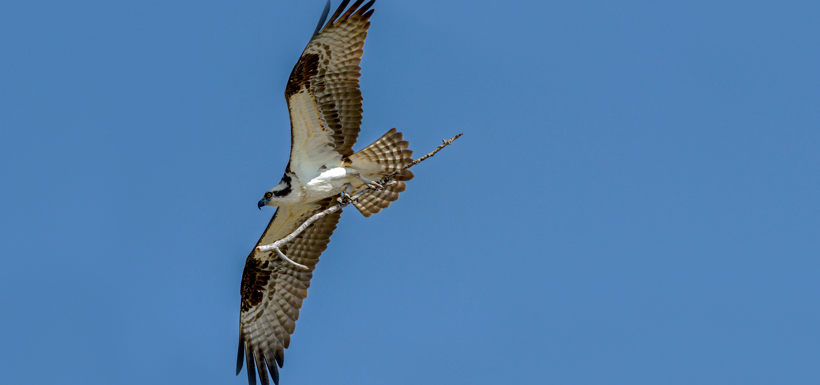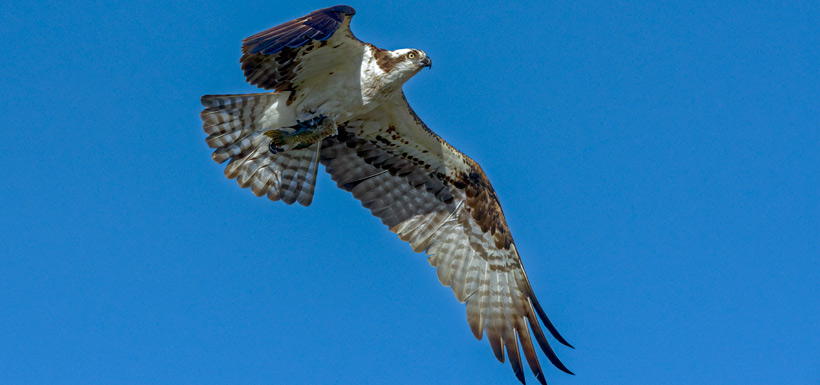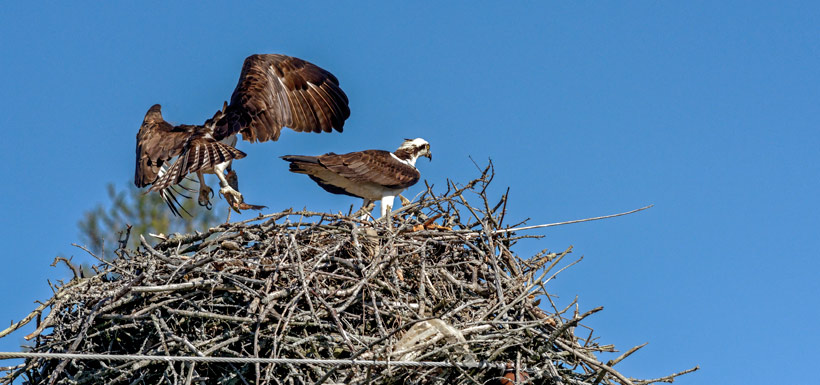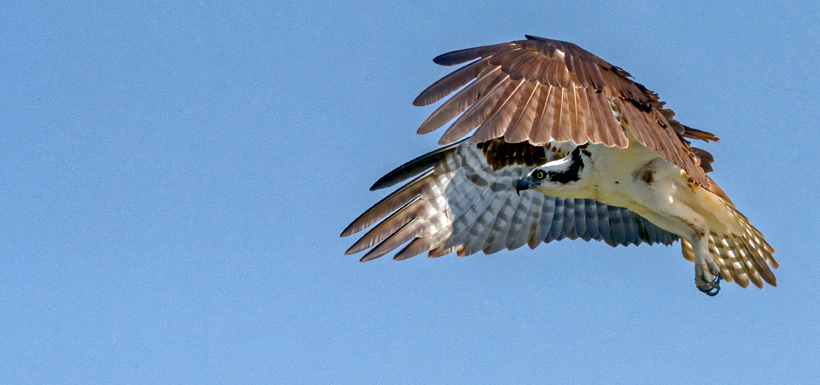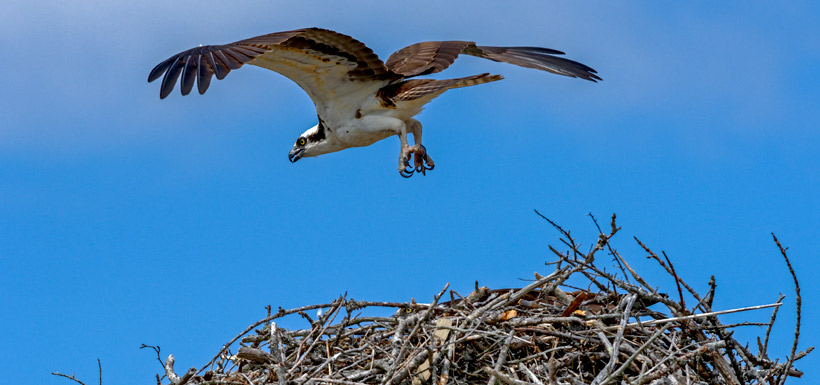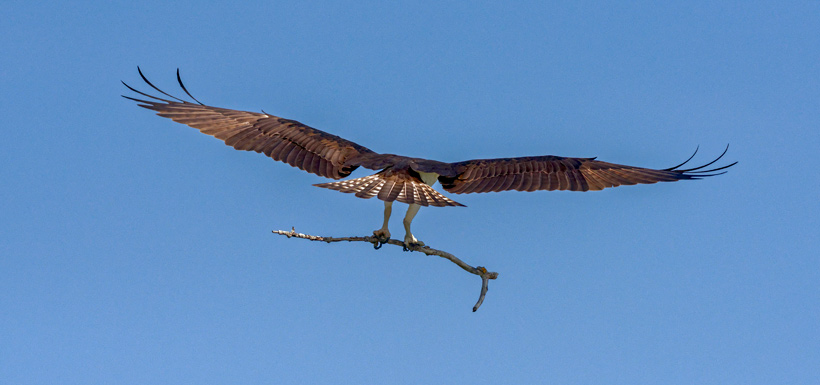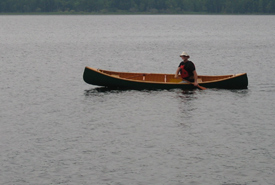In the eye of an osprey
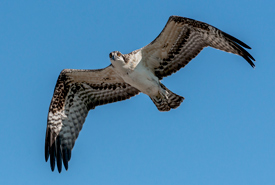
Osprey in flight (Photo by Lorne)
Since the publishing of “An osprey family affair,” I’ve made three trips to a primary nest site to witness the arrival of the Kawartha Lakes osprey this spring. As a photographer, waiting up to four hours for even a short burst, I was fortunate to capture some of the events that unfolded before me (see the slideshow, below). But this report is an imagined first-person narrative told through the eyes of a large female osprey to complement the attached images:
“Following the early spring arrival of a few males, I arrived from wintering grounds in late April of this year to claim a well-established breeding nest in the Kawartha Lakes district. It had what every female looks for in osprey real estate: great nest structure and quality, lots of room for a healthy brood and of course location, location, location. Even though the nest platform is built on a hydro pole that’s now far from vertical, this will be home for the next 12 weeks.
“I don’t know when I was banded, but my first recollection of this nesting region was when I was about five. Some osprey researchers speculate my DNA spawns territorial fidelity rather than pair-bonding, but most of us mate for life. With a little luck, my former partner has already arrived — in fact it’s possible he’s one of those males riding the thermals high above, hoping to get my attention with his flight prowess.
“Now, I’m not complaining about aerial courtship, in fact it’s quite flattering as I view it from the penthouse, but I’d prefer in these early days that my partner make housekeeping a higher priority.
“It’s a busy time for even a committed pair, and while I feather the nest I depend on him to find new building materials. Flying past a tree with dead branches, he can snap off what is needed, bring it to the nest and leave it with me to rearrange (photo one). When he drops off a fish following a successful hunt (photo two), I get the opportunity to either eat in or grab-and-fly to have a break from my daily routines. If it’s more convenient, there’s also the option of returning to the nest with leftovers (photo three).
“In any event, things have gone quite smoothly this year. For a short while I had to weather some heavy rain, snow and ice pellets, but the recent transition to summer heat has been quick. Right now my partner seems to prefer only hanging around, but he does stop by in the event his services are needed (photo four). He was briefly tempted by another female who buzzed our nest, (in fact he flew off with her — photo five), but he returned after a short flight over Balsam Lake with a token apology (photo six).
“I expect fertilized eggs will be laid by the end of May. If not, divorce is a possibility, but assuming all goes well, incubation will primarily be my responsibility for about 40 days until the chicks hatch. At that time we will start sharing responsibilities for fishing, feeding and supervision of our family.”

